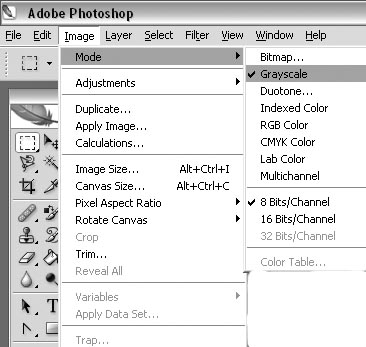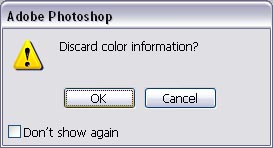|
(section 091)
October 6th: Page Design
Announcements
- Bob Dylan...THE Bob Dylan!
UNC Charlotte's Halton Arena
Thu., 10/14 @ 8:00 pm
- "Diversity as the American Dream"
Speaker Debbie Almontaser
Mon., 10/18 @ 7:00 pm
McKnight Hall Cone Center
- Southeast Women's Studies Association Annual Meeting
Submission Deadline: Mon., 11/01 (250-word abstract)
Conference: March 24-26, 2011
Georgia State University, Atlanta, GA
- Annual Meeting of the Popular Culture and American Culture Associations, Southwest/Texas Region
Submission Deadline: Wed., 12/15 (250-word abstract)
Conference: April 20-23, 2011
Marriott Rivercenter San Antonio, TX
- UFC 120 Sat., 10/16 @ 10:00 pm (free on Spike)
Don't forget to hand in your Document #2.
Plan for the Day
We've got a few things to do today, so below is a list:
Ethos, Pathos, Logos
Before we go any farther, let's read over the questions on p. 67 about ethos, pathos, and logos. Also, I want to remind you that a goal of this course is for you to recognize your biases and how you construct meaning or allow certain appeals to persuade you.
I have a brochure to look at that will help us think about these appeals. Open the NPIC "Pets and Pesticide Use" fact sheet. It'll open as a pdf. Of course, the appeals are below:
- Ethos: appeal or presentation of one's character or credibility...try not to get emotional about character! Get it?
- Pathos: appeal to emotions; evoking emotional responses.
- Logos: appeals to logic or facts in a message. Remember, logic is a formal study and not the whims, quirks, or assumptions of an individual.
The above modes of persuasion often work together in messages. In order to fully understand these modes, however, I'm asking you to be very specific in how you explain these appeals. Here's a specific discussion on not letting your conclusions distract from the document's conclusions.
Document #3: Tutorial
Your next assignment will be a tutorial. It's due in three weeks (10/27), and we'll have a workshop on it in two weeks (10/20), so make sure you have something to show to another classmate. Check out the updated assignment page for more details.
Black & White Images in Photoshop
Here's a simple little tutorial for making color images black and white using Photoshop. You already did this with your picture frame, but I decided to put it up here again.
With Photoshop open, click Image, move the cursor to Mode, and click then Grayscale on the pop-up menu.

Click "OK" on the following dialog box:

Chapter 5: Pages
So how do we get into a discussion on "viewing pages" of all topics? In some ways it's quite similar to previous discussions, but I think we need to focus on how an audience consumes a document. Please have your Document Design books out so we can refer to particular pages.
- Many cultures surrounding documents (p. 118)
- Skim, Scan, Read (p. 119)
- Creating meaning with page design (expanded definition of rhetoric)
- metatextual: text about text
- metacognition: thinking about thinking
- metadata: information/data about data
- metacognition and metadata are not in Ch. 5
- Connection, hierarchy, sequence, and balance (pp. 120-121)
- Note on balance:
- When considering if a design is balanced, you are interpreting the relative visual weight of objects on a document horizontally and vertically.
- Of course, this is subjective, but p. 131 has a couple designs that might be said to be objective.
- However, it's all relative.
- Watch your eyes!
(pp. 125-126)
- saccades: quick eye movements
- fixations: fixing one's glance on something (or obsession, but that's not an information design issue...or is it?)
- The benefits of columns and power zones (pp. 126-127)
- Symmetry or asymmetry (pp. 130-131)
- 7-12 words per line (p. 139)
- Grids
- Aspect ratio and user requirements
- Analogy: Points are to picas as inches are to ________.
1 inch = 6 picas = 72 points
- Breaking the grid / Breaking the grid
What else can we say?
Chapter 5: Contrast
Now that you've read chapters 1-5 and most of 8 in The Non-Designer's Design Book, you're probably getting a feel for the author's design agenda. What do you think drives her design decisions? Talk about that amongst yourselves for a little bit. There's no right or wrong answer, but please have some evidence (from the book) about what you believe her design agenda to be.
The web and dark backgrounds.
Perception, Culture, and Rhetoric
Last week I asked you to think about the following documents and write up a brief analysis of them with regard to Conventions, Human Factors, and Transformation. Instead of posting that analysis, let's go over your thoughts as a class. If the discussion isn't fruitful, I'll ask you to post something on Moodle.
Group/Row #1
Group/Row #2
Group/Row #3
Group/Row #4
Group/Row #5
Group/Row #6
Additionally, don't forget to consider the document for perceptual, cultural, and rhetorical perspectives.
Groupwork on Your Documents
Now it's your turn. In groups, examine the documents you brought in and determine how their layout, construction, and supratextual elements affect the documents use. Additionally, don't forget to consider the document for perceptual, cultural, and rhetorical perspectives (pp. 116-119). Also, discuss the following with regard to your documents:
- Conventions
- User Expectations
- Organizational Preference
- Industry Standards
- Human Factors
- User Needs
- User Context
- User Resources (compatibility)
- Transformation
Don't worry about cost for now, but when do you expect your document to change? Think for a minute or two before you ask, "What exactly are you looking for?"
Web Pages and You
Have you asked, "what does my web site communicate about me?" Well, if not, please do. I want you to have a web site that in some way benefits you or is at least of interest to you. Design your website so that you can show you know how to use Dreamweaver, to show you understand principles of information design, and/or to show your interests. I'm giving you a lot of leeway on this web page because I want to see what you'll come up with. At a minimum, however, you need to be updating your pages every week.
No Class Next Week--Conference
Make sure you read Chapter 6 in Document Design before coming to class next week (10/20). Please find a typeface or two that you like, find interesting, or, at least, you can discuss. Find exotic ones--no Times New Roman or Arial.
Also, we'll have a workshop (a longer one I hope) for Document #3, which is due in three weeks (10/27)!
...
|
